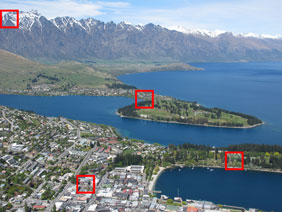Canon PowerShot G11
-
-
Written by Gordon Laing
Canon PowerShot G11 vs Olympus E-P1 vs Panasonic Lumix DMC-GF1 real-life detail
Canon PowerShot G11 results : Real-life resolution / High ISO Noise
Canon PowerShot G11 with built-in lens |
Olympus E-P1 with Lumix G 20mm f1.7 |
Panasonic Lumix DMC-GF1 with Lumix G 20mm f1.7 | ||
 |
 |  | ||
f4, 80 ISO |
f4, 100 ISO |
f4, 100 ISO | ||
 |  |  | ||
f4, 80 ISO |
f4, 100 ISO |
f4, 100 ISO | ||
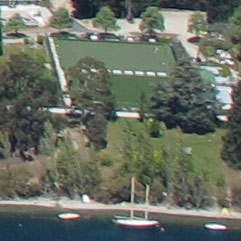 | 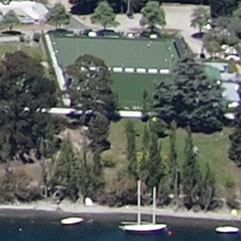 | 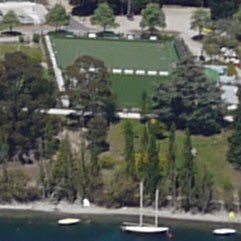 | ||
f4, 80 ISO |
f4, 100 ISO |
f4, 100 ISO | ||
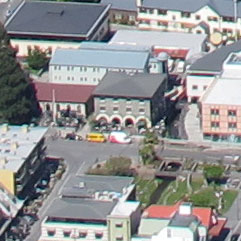 | 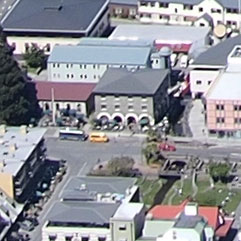 | 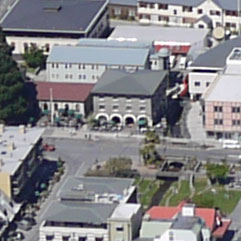 | ||
f4, 80 ISO |
f4, 100 ISO |
f4, 100 ISO |
Canon PowerShot G11: JPEG versus RAW
|
We photographed the scene pictured above using the G11’s RAW plus Large Fine JPEG mode, allowing us to directly compare images created from exactly the same data. Below are crops taken from the original JPEG file alongside the RAW version, processed in Canon’s Digital Photo Professional software. The default settings produced a softer result than the in-camera JPEG, so we’ve boosted the sharpness to 7 to see what detail can be brought-out. The boost in sharpening has certainly brought out a little extra detail on the converted RAW file, albeit with some minor sharpening artefacts as a result. Looking at the entire image, we’d say the converted RAW file certainly has the edge over the in-camera JPEG, and some minor adjustments in DPP could get the balance just right. RAW recording is one of the important features of the G11, but while it actually makes little difference with some compacts, there’s a visible benefit to using it here. Now let’s look at how the camera performs across its sensitivity range in our Canon PowerShot G11 High ISO Noise results. |
Canon PowerShot G11: JPEG |
Canon PowerShot G11: RAW | |
 |  | |
f4, 80 ISO |
f4, 80 ISO |
To compare real-life performance we shot this scene with the Canon PowerShot G11, Olympus E-P1 and Panasonic Lumix DMC-GF1, within a few moments of each other using their best quality JPEG and base ISO settings. Both the GF1 and EP-1 were fitted with the same Lumix G 20mm f1.7 lens, set to f4 (the sharpest aperture for the lens in this test). The G11’s zoom was adjusted to match the field-of-view as closely as possible. The image above was taken with the Canon PowerShot G11 in Program mode at 9mm f4 with a sensitivity of 80 ISO; the original JPEG measured 3.03MB. The crops are taken from the areas marked with the red squares and presented below at 100%. Each camera was using its default settings for noise reduction and image processing, but all contrast-enhancements were disabled to avoid artificially increasing the noise. We’ve compared the Canon PowerShot G11 against the Olympus E-P1 and Panasonic Lumix GF1 in our results pages here because all three are powerful compacts aimed at enthusiasts who want a high degree of control. The E-P1 and GF1 may cost 50% more than the G11 thanks to their physically larger sensors, but as discussed in detail on our verdict page, we strongly believe all three are targeting the same audience, many of whom are willing to adjust their budget for a compact which delivers the quality and control they desire. Looking at the crops below, it’s important to remind yourself the PowerShot G11 has a considerably smaller sensor than the other two models here, and also two fewer Megapixels. We also fitted the two Micro Four Thirds models with a prime lens set to its optimum aperture, whereas the G11 was using its built-in lens with an aperture automatically selected in Program mode. As such, it’s impressive just how similar the degree of real-life detail is between the three models at their lowest sensitivities. Indeed most of the differences you’re seeing here are down to their respective image processing strategies using the default settings. The Olympus E-P1 is clearly applying the greatest sharpening of the three cameras here, with the punchiest image as a result. In contrast, the Panasonic GF1 is taking a more laid-back approach with its default in-camera JPEGs, and Canon has also struck a good balance between applying sufficient sharpening to reveal detail without suffering from undesirable artefacts. The mountain ridge may be lacking contrast and suffering from a little softness on the G11 sample here, but in terms of the other cropped areas, we’d say Canon’s latest compact performs very well and some may even prefer its default output here compared to the pricier cameras alongside. Of course the larger sensors of the E-P1 and GF1 give them an advantage under lower light, but under bright conditions at the lowest sensitivity (and using their default settings), the PowerShot G11 can certainly give them a run for their money. A great result here for the G11. Now scroll down to see whether shooting in RAW brings any benefits to the G11, or if you can’t wait any longer, check out how it performs across its sensitivity range in our Canon PowerShot G11 Noise results. |
